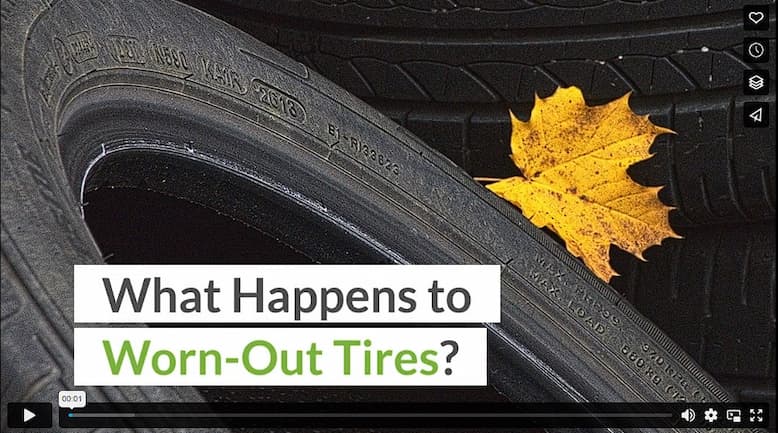Around the world, we produce approximately three billion tires every year. That means we make about 20 times more tires than babies. Although there have been advances in tire technology to make them more durable, tires wear out and eventually need to be replaced. These end-of-life tires are recycled in multiple ways depending on the intended purpose of the recycled material. If the recycled tire is used as fuel, it won’t be reduced as completely as if it is used in asphalt or repurposed in brand new tires.
For clarity, the steps outlined in this article assume the tire is being reduced to rubber powder using the techniques advanced by ECO Green equipment. Whether you are considering starting a tire shredding business or simply curious about what happens to your worn-out tires, here are the seven fundamental steps to the recycling process.
1. Collection
Like every recycling process, tire recycling begins with collecting used tires. Gas stations, tire dealerships, and auto repair shops collect used tires for recycling. Most landfills no longer accept tires because they do not biodegrade, and they end up taking a lot of space in landfills. Due to their chemical properties, tires also cause ground and air pollution and are a significant fire hazard. Tire fires are notoriously difficult to extinguish. Tire recycling companies must monitor the potential fire hazard of their collections. Collecting tires to be recycled is a much safer and environmentally friendly alternative to dumping them off the side of the road or in a landfill.
2. The Primary Shredder
Once a tire recycling company has collected retired tires, they are shredded into smaller pieces of rubber by powerful machinery called tire shredders. The tires are placed on a conveyor belt that drops them into the top of the shredder. Two oppositely rotating cylinders with large metal teeth cut through the tire in a matter of seconds. The ECO Green Giant shredder can process up to 30 tons of tires per hour. The result is roughly, six to twelve-inch strips of rubber.
3. Secondary Shredders
The rough pieces of rubber from the primary shredder are transported to a second shredder, which breaks down the strips into rubber chips. A large magnet separates the metal tire wires from the rubber pieces. Tires are primarily made from rubber, but tire wires increase durability and tire lifespan. The end goal is to repurpose the rubber. Most of the uses of recycled rubber require the tire wire to be removed.
4. The Granulator
Farther along the conveyor belt, the chips of rubber are processed by a granulator. Depending on what the rubber will be used for, this may be the final step in the tire reduction process. The granulator turns the chips into rubber ‘crumbs’ around one-fourth of an inch in size. It does this through a single rotor set at high speed. This method is in contrast to the first two steps that use a higher torque and more moderate rotation speed.
5. The Krumbustor
The Krumbustor, a variation of a cracker mill, reduces the rubber crumbs from the granulator into powder. This powder rubber measuring down to 850 microns is the most malleable and can be repurposed into many rubber products. The Krumbustor stands apart from standard cast iron cracker mills by using advanced hydraulics to double standard output while drastically decreasing maintenance downtime.
6. Repurposing
The final step to the overall recycling process is repurposing the recycled product. The rubber end product of a tire recycling plant is used in various ways. Artificial sports turfs, playground surfaces, welcome mats and garden mulch are common uses of recycled tire rubber. Larger industrial systems also use recycled tire rubber as an ingredient in asphalt, fuel for concrete production (TDF) and filler in many civil engineering projects. Recent innovations have made it possible to incorporate recycled tire rubber back into new tire production.
7. Make a profit
Tire recycling is a great way to reduce pollution as well as a viable small or large business venture. Recycled rubber products are in high enough demand and a well-run recycling plant can profit from selling the raw product. Another approach is to invest in end-of-the-line equipment that can shape a product fit for a specific niche. Molds and a rubber colorizing line can quickly create sellable goods. Molded rubber goods can potentially be sold for much more per unit of rubber than large bags of granules or powder. It is important to identify the market for your end product and invest in the equipment necessary to produce it.
Other profitable niches exist, such as chemically altering the raw rubber before selling it off. Polyethylene or polypropylene can be combined with recycled rubber to make thermoplastic elastomers (TPE). TPEs have more useful properties than ordinary rubber and are used in products from catheters to snowmobile tracks.
Video





